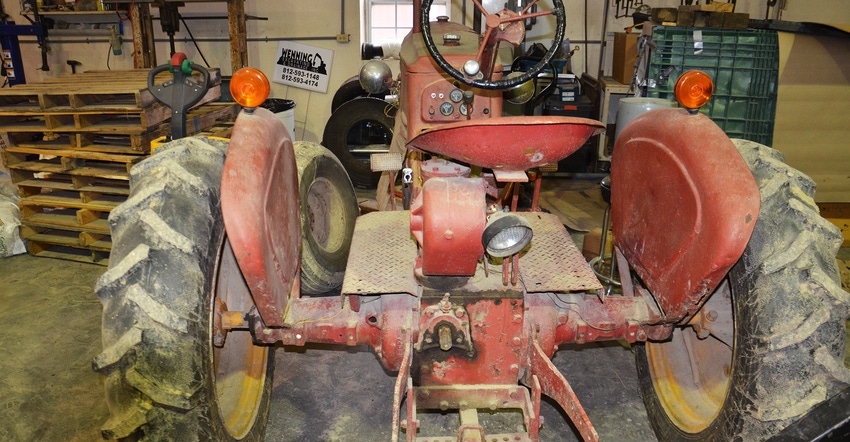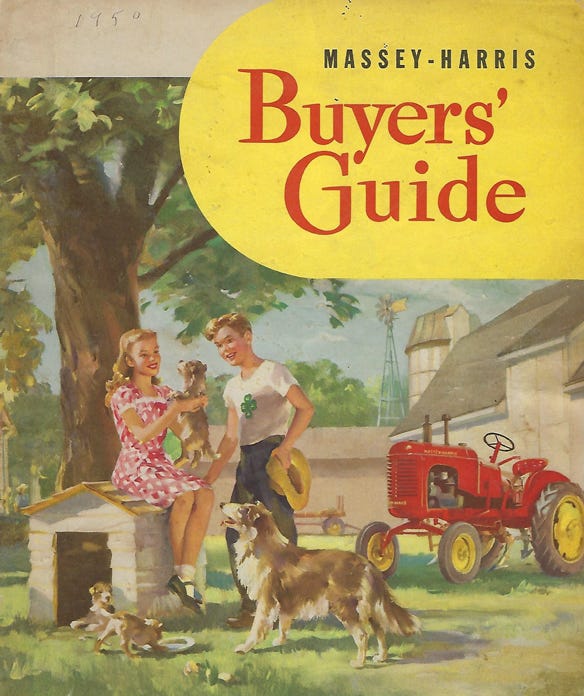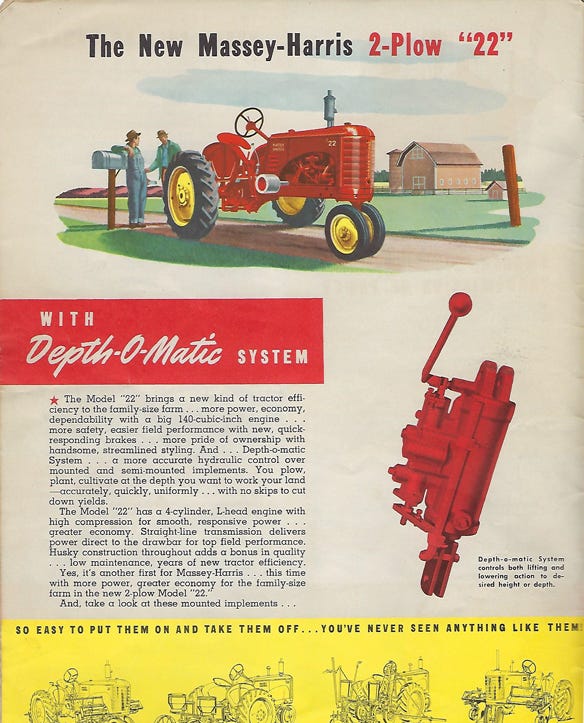December 6, 2018

The front cover a circa-1950 Massey-Harris Buyers’ Guide features an artist’s rendition of what many people considered the All-American farm. A young lady sits on top of a doghouse playing with a puppy, while a young boy in a white T-shirt with a green 4-H clover on it holding a straw hat stands nearby. There’s a hip roof barn and a silo with a wooden cap in the background, a windmill and, of course, a shiny new Massey-Harris tractor, equipped with mounted cultivators.

SELLING POWER: Scenes like this played well to prospective tractor buyers in the 1950s.

If that doesn’t transport you to the 1950s, the pages inside will. A spread features a mix of artwork and pictures of “The New Massey-Harris 2-Plow ‘22’” with a farmer and presumably his equipment dealer standing behind a shiny, artistic rendition of the tricycle-front-end Model 22.
Simple economy
The opening paragraph explains what this tractor was all about and which market the Canadian tractor maker was targeting. “The Model ‘22’ brings a new kind of tractor efficiency to the family-size farm — more power, economy, dependability with a big 140-cubic-inch engine … more safety, easier field performance with new, quick-responding brakes … more pride of ownership with handsome, streamlined styling … new tractor efficiency.” You get the drift.
The pride of the Massey-Harris engineering team of that era was the Depth-O-Matic system, featured on the Model 22. It was designed to provide more accurate hydraulic control over mounted and semimounted implements.
The brochure claims, “Straight-line transmission delivers power to the drawbar for top performance, with husky construction delivering low maintenance and years of new tractor efficiency.”

NEW MODEL 22: Simplicity and economy were the themes in this description of the new Massey-Harris Model 22 when it was introduced.

It may have been 1950, but major engineering achievements compared to the past were already appearing. Engineers designed a transmission for the Model 22 forged from alloy steel with helical gears for “uniform mesh” and “quiet performance.” The block for the L-head, four-cylinder engine was “cast from one piece of tough, erosion-resisting alloys.”
Test of time
The Massey-Harris 22 in Roger Wenning’s shop near Greensburg, Ind., may look old and faded, but the engineering that went into the inside means it still runs today. Roger’s son Nick recently acquired this tractor. He says it runs well.
“They were well-built tractors for their day, and we have used other Massey-Harris models around here for various chores for a long time,” Nick says.
According to tractordata.com, Massey-Harris built the Model 22 from 1948 through 1953. It was the successor to the Massey-Harris 20. Roger and Nick also have one of those, and it also runs.
Massey-Harris claimed 18 hp at the drawbar for the Model 22, but it actually tested at nearly 23 hp. Massey-Harris claimed 27 hp for the PTO; it tested at about 31 hp on the belt.
You could have purchased a Model 22 new in 1953 for the list price of $1,468. The tractor was built at the Massey-Harris factory in Racine, Wis.
Comments? Email [email protected].
You May Also Like




